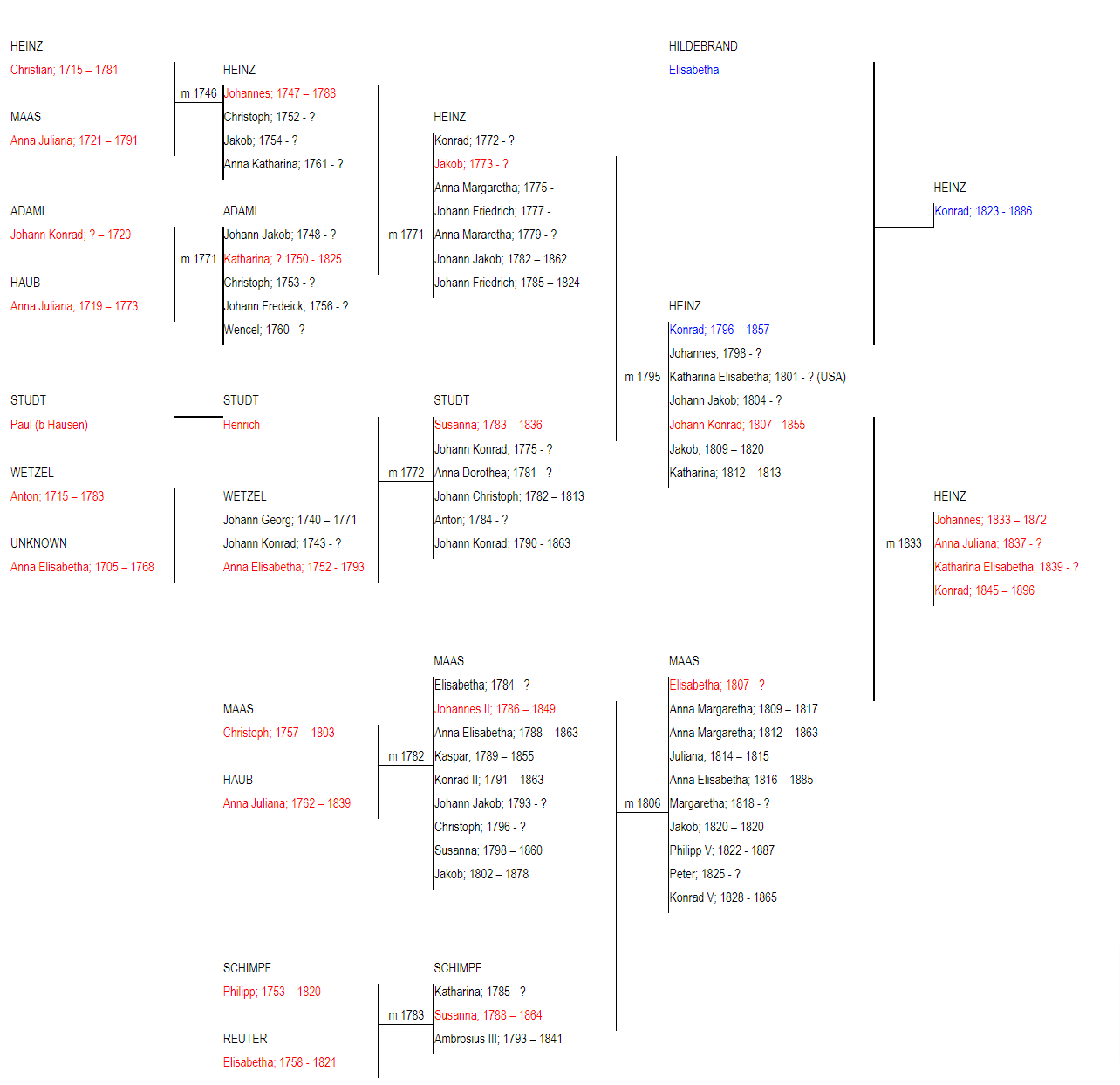Konrad HEINZ 1845-1895
When Johann Konrad Heinz and Elisabetha Maas took their four-day-old son to the Nieder-Weisel church on Sunday, 7th December 1845 to be baptised Konrad, they could not have imagined that this little child would one day wear the insignia of office of the First Citizen of a large provincial town in a State more than 20,000 km distant from their village.
Konrad was left in the village to complete his education when his father and the older siblings left for Victoria. It was not until he was 15 that his mother arranged for Konrad to go to England with several other young villagers to take passage on the “Empire of Peace” which left from Liverpool on 27th June 1861. They reached Melbourne after a voyage of 99 days.
Konrad first made his way to Castlemaine where his sister was living but, after a short stay with her, moved to the Bendigo region where his brother was prospecting, and obtained work in a butcher’s shop. An interest in horses led to his enlistment in the Prince of Wales Light Horse, in which he served for ten years. In 1866, at the age of 20, he married Franzisca Inglefinger. She had arrived in Victoria from Wuertemberg on board the “John Linn” in 1857; she was Konrad’s junior by two years. Pastor Munzel celebrated the marriage in the German Lutheran Church in Bendigo.
Franziska gave birth to the couple’s first child in Sandhurst the following year; they called her Catherine Elizabeth after Konrad’s sister. A son was born in 1870 but did not live. In 1871 a second boy, named Albert Conrad, was born in the Heinz home in Webster Street. In 1872 Conrad was naturalised; this enabled him to buy a property and go into business in his own right. Konrad’s friendly and helpful disposition brought many customers to his shop from Happy Valley and Ironbark and his business prospered.
Another daughter, Anna, arrived in 1874 but Alfred died about a year later. George Francis was born in 1876 but he died in March 1878 whilst Franziska was pregnant with the next child, Alfred Ernest. Franziska Maria, born in 1860, and John Conrad in 1882 completed their family of three girls and two boys.
In 1883 Konrad moved into bigger premises on the Mount Korong Road. He took a keen interest in community affairs, becoming patron of sporting clubs, fire brigades and the Glee Club. As president of the German Verein, he played a major part in the building of the new Lutheran church. He became Life Governor of the hospital and benevolent asylum. He encouraged the arts and supported local mining ventures. In 1892 he was persuaded to stand for the city council and he was unopposed in Barkly ward. Because of his good business brain he was appointed to the mayoral chair in only his second year. In acknowledgement of the depressed times he cancelled the usual inaugural ball and gave the money thus saved to the needy.
Konrad commissioned architect Beede to build a villa at No 60 Eaglehawk Street, to be known as ‘Wetterau’, the name of the region in which Nieder-Weisel is located. However he did not live to see it completed. Refusing medical advice to have his cancer-ridden left leg amputated, he relied on a herbalist to cure him; the remedies failed and he died on 13th February 1895. The flags on the Town Hall and other buildings flew at half-mast as his funeral procession moved to the Bendigo cemetery. His widow died on 8th November 1928 in her 80th year.
View Konrad's Family Chart

